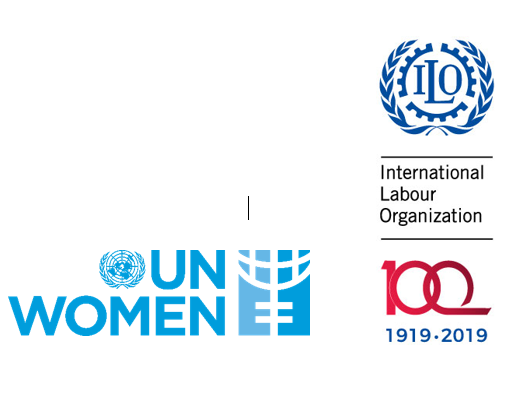Chapter 2, Defining the problem and effects of violence and harassment against women in the world of work, introduces readers to the conceptual framework on gender equality and the need to transform social norms – a theme that runs throughout this handbook - and key concepts regarding violence and harassment against women in the world of work. It also explains the various dimensions of violence and harassment in the world of work that are explored in the handbook, as well as related costs and impact.
Chapter 3, International and regional legal and policy framework, gives a brief overview of several international and regional human rights frameworks and policies. It identifies their relevance to ending gender-based forms of violence and harassment against women in the world of work, for example, through United Nations Conventions and international labour standards, the Sustainable Development Goals and business and human rights initiatives.
Chapter 4, The role of state and non-state actors in ending violence and harassment in the world of work, goes a step further by exploring the role of state and non-state actors in ending violence and harassment against women in the world of work. It looks at the overarching framework of laws and services provided by governments and state actors. However, while a regulatory framework is necessary, it is insufficient for achieving practical, lasting change. What is also needed are measures that transform gender relations and lead to real change in women workers’ lives. The active participation of state-actors, business associations, employers, trade unions and workers themselves, as well as NGOs and women’s organizations, is therefore, critically important.
Chapter 5, Social dialogue to end violence and harassment against women in the world of work, explores the role of social dialogue by focusing on both tripartite and bi-partite dialogue to effect real and lasting change. Many of the examples, case studies and promising practices presented in this chapter show the importance of social dialogue, underpinned by freedom of association and the right to collective bargaining, in developing agreements - at the workplace, sectoral and global levels - to address violence and harassment against women.
Chapter 6, Responding to situations in which women are more exposed to violence and harassment in the world of work focuses specifically on how women are disproportionately affected because of their work in certain situations of informal and non-standard employment; in occupations and jobs where they are particularly exposed to gender-based violence and harassment from third-parties; and face additional risks associated with changing work organization, work processes and working patterns.
Chapter 7, A transformative approach to ending violence and harassment against women in the world of work, presents nine dimensions around which the world of work can be transformed in order to end violence and harassment against women. Working on these dimensions helps promote a world of work that is equal, dignified and respectful, where there is recognition of women’s rights and decision-making roles, and where women’s participation and contribution are valued. Along with practical workplace policies, programmes and initiatives, this chapter explores issues relevant to the wider world of work - including safe cities and public spaces - and the role of public services that meet women’s needs (i.e. gender-responsive public services) and promote women’s rights and provide for the infrastructure, planning and provision of services that guarantee their safety and their full participation in work and society.
The UN Women-ILO Handbook presents promising practices – policies, strategies, campaigns, initiatives and other actions – that provide helpful insights and practical examples of how to tackle violence and harassment against women in the world of work. Taken together, they show that much progress is being made all around the world – although much more work needs to be done – and that it is both possible and critically important to transform gender relations in the world of work in order to end violence and harassment against women.
